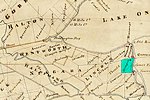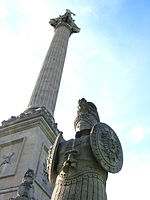School of Restoration Arts at Willowbank
Architectural historyNew Classical architectureOrganizations based in Canada with royal patronageSchools in Ontario

Willowbank is an independent educational institution located on the Willowbank National Historic Site and in the village centre of Queenston, Ontario, along the Canada-United States border. It operates a School of Restoration Arts which offers a three-year post-secondary diploma in conservation skills and theory, and a Centre for Cultural Landscape, a forum for cultural landscape theory and practice in Canada and the world. Willowbank was created from the rescue of a 19th-century estate which today forms the centre of its campus, and it is one of a handful of Canadian organisations of which Charles III is Royal Patron.
Excerpt from the Wikipedia article School of Restoration Arts at Willowbank (License: CC BY-SA 3.0, Authors, Images).School of Restoration Arts at Willowbank
Queenston Street,
Geographical coordinates (GPS) Address External links Nearby Places Show on map
Geographical coordinates (GPS)
| Latitude | Longitude |
|---|---|
| N 43.1677 ° | E -79.0579 ° |
Address
Willowbank
Queenston Street
L0S 1L0
Ontario, Canada
Open on Google Maps







